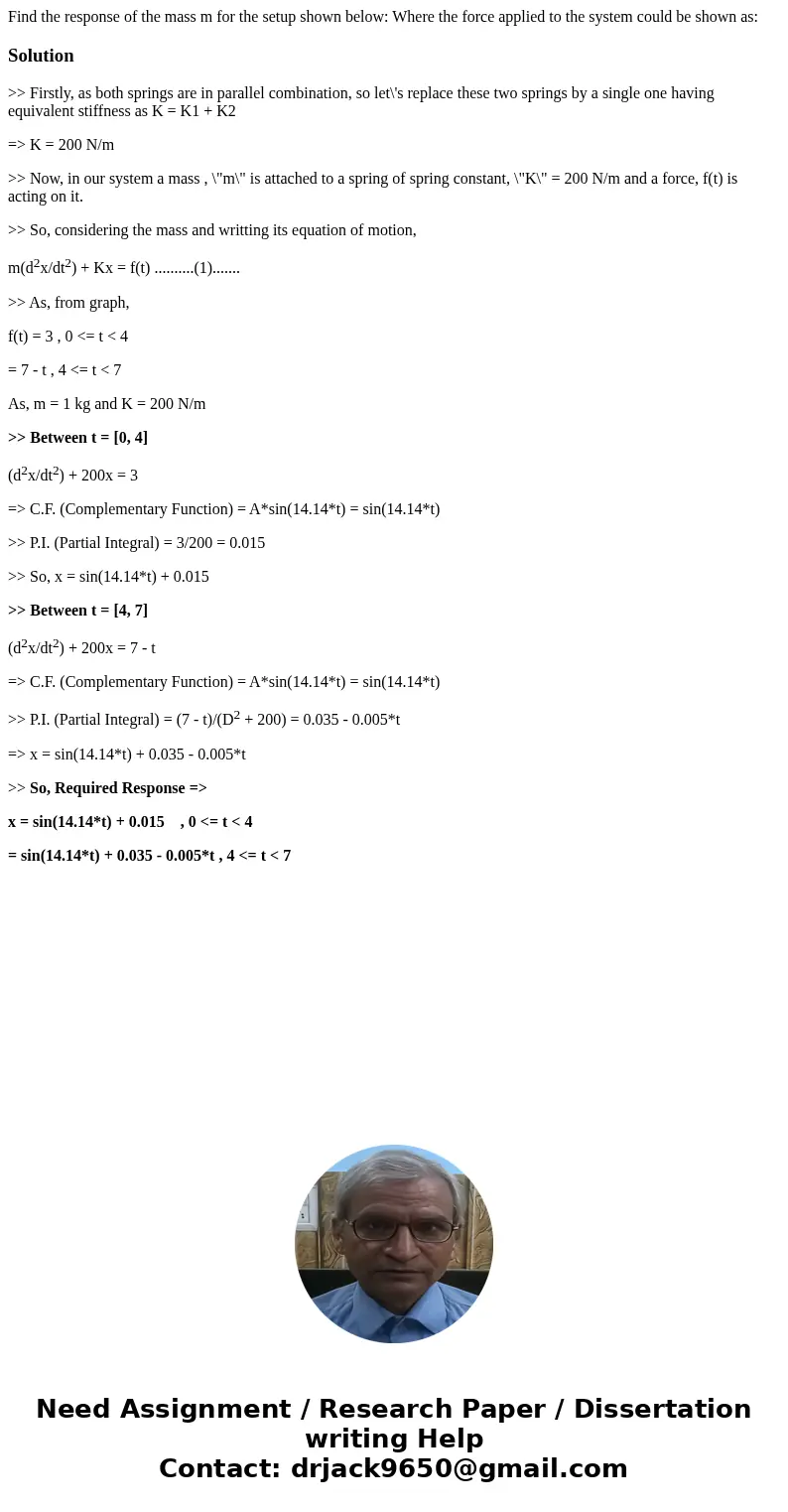Find the response of the mass m for the setup shown below Wh
Solution
>> Firstly, as both springs are in parallel combination, so let\'s replace these two springs by a single one having equivalent stiffness as K = K1 + K2
=> K = 200 N/m
>> Now, in our system a mass , \"m\" is attached to a spring of spring constant, \"K\" = 200 N/m and a force, f(t) is acting on it.
>> So, considering the mass and writting its equation of motion,
m(d2x/dt2) + Kx = f(t) ..........(1).......
>> As, from graph,
f(t) = 3 , 0 <= t < 4
= 7 - t , 4 <= t < 7
As, m = 1 kg and K = 200 N/m
>> Between t = [0, 4]
(d2x/dt2) + 200x = 3
=> C.F. (Complementary Function) = A*sin(14.14*t) = sin(14.14*t)
>> P.I. (Partial Integral) = 3/200 = 0.015
>> So, x = sin(14.14*t) + 0.015
>> Between t = [4, 7]
(d2x/dt2) + 200x = 7 - t
=> C.F. (Complementary Function) = A*sin(14.14*t) = sin(14.14*t)
>> P.I. (Partial Integral) = (7 - t)/(D2 + 200) = 0.035 - 0.005*t
=> x = sin(14.14*t) + 0.035 - 0.005*t
>> So, Required Response =>
x = sin(14.14*t) + 0.015 , 0 <= t < 4
= sin(14.14*t) + 0.035 - 0.005*t , 4 <= t < 7

 Homework Sourse
Homework Sourse